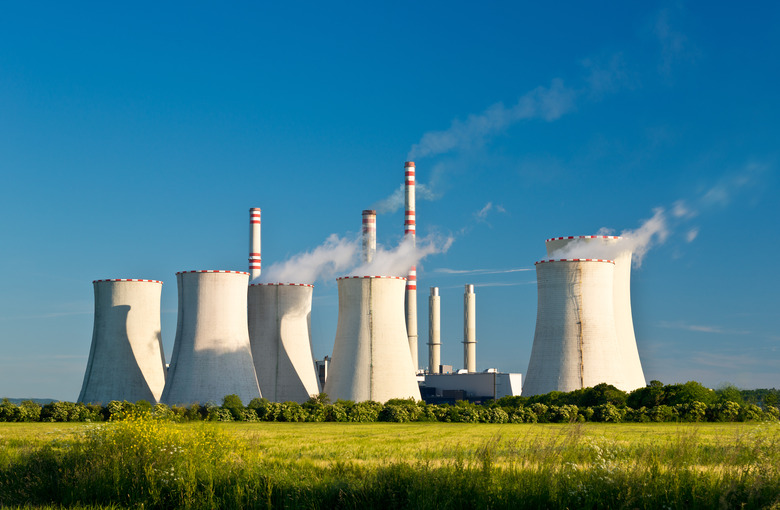Advantages And Disadvantages Of Thermal Power
Thermal power has been used as a natural form of energy for thousands of years in cooking and heating. Hot springs are just one example of this naturally-occurring thermal energy. With today's rising power demands, geothermal power plants are attractive options for their cheap, environmentally-friendly energy production. However like all power sources, thermal isn't perfect, and disadvantages temper the strengths.
Financial Costs
Financial Costs
One of the primary advantages of thermal power is that the generation costs are extremely low. No fuel is needed to generate the power, and the minimal energy needed to pump water to the Earth's surface can be taken from the total energy yield. Even considering transport, geothermal energy is estimated to save 80 percent of the costs associated with fossil fuels, such as oil and natural gas. The principal financial disadvantage of a geothermal system is its high initial installation costs. The longer a plant is operational, the more it pays for itself in the long run.
Environmental Impact
Environmental Impact
Thermal power is revered by environmental activists because it is completely renewable, does not use fuel to produce power and has virtually no emissions. It also helps reduce global warming and pollution and requires far less land than a coal mine or oil field. The only environmental disadvantage is the occasional release of harmful gases. Since thermal power operates by drilling into the Earth's mantle, some poisonous gases can escape. These gases can be a danger to plant workers, who must wear protective equipment, but have little impact once dispersed into the atmosphere.
Job Creation and Hazards
Job Creation and Hazards
Thermal power facilities create a number of jobs for local communities. Researchers, scientists and drilling workers are among the specialists needed for safe and effective operations. Disadvantages in this area involve limited workplace hazards, such as crystalline silica dust and exposure to extremely hot steam and water mains. Fortunately, these dangers are minimal, especially compared to other energy industries, like fossil fuels.
Location
Location
A main disadvantage of thermal power plants is that they can only be constructed in areas where temperatures below the Earth's surface allow for the production of steam over a long period of time. The type of rock in the region must also be easy to drill through. Extensive research is needed to find these key areas; and because of their rarity, plants are sometimes forced to operate in relatively remote regions. Both of these factors contribute to the high initial cost of starting up a geothermal facility.
Long-term Viability and Risks
Long-term Viability and Risks
In areas where there is long-term steam production, thermal plants can thrive and produce many megawatts of clean, renewable power. In these scenarios, plants quickly recoup initial costs. However, environmental factors can sometimes lead to a reduction in steam in a region, forcing companies to take the risk of potentially losing their investment. Lack of equipment or qualified personnel and the relative financial security of fossil fuel extraction by comparison serve as an added disadvantage, hampering the continued expansion of thermal power.
Cite This Article
MLA
Kittmer, Lucas. "Advantages And Disadvantages Of Thermal Power" sciencing.com, https://www.sciencing.com/advantages-disadvantages-thermal-power-8235557/. 24 April 2018.
APA
Kittmer, Lucas. (2018, April 24). Advantages And Disadvantages Of Thermal Power. sciencing.com. Retrieved from https://www.sciencing.com/advantages-disadvantages-thermal-power-8235557/
Chicago
Kittmer, Lucas. Advantages And Disadvantages Of Thermal Power last modified March 24, 2022. https://www.sciencing.com/advantages-disadvantages-thermal-power-8235557/
